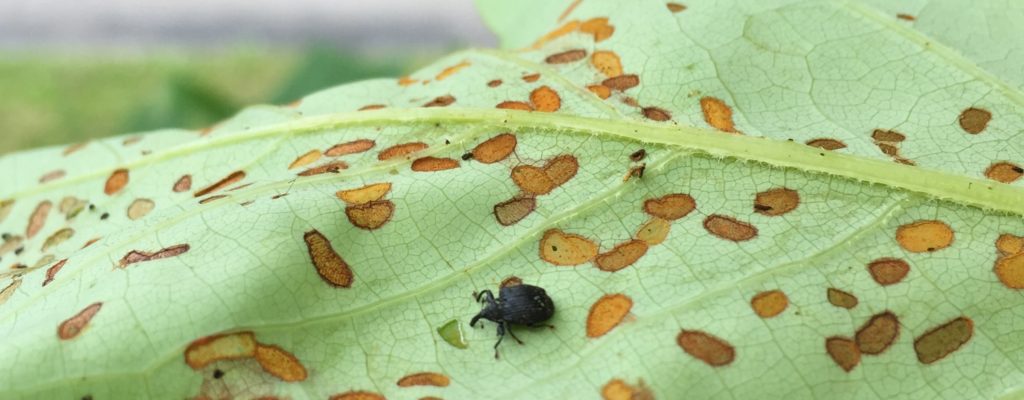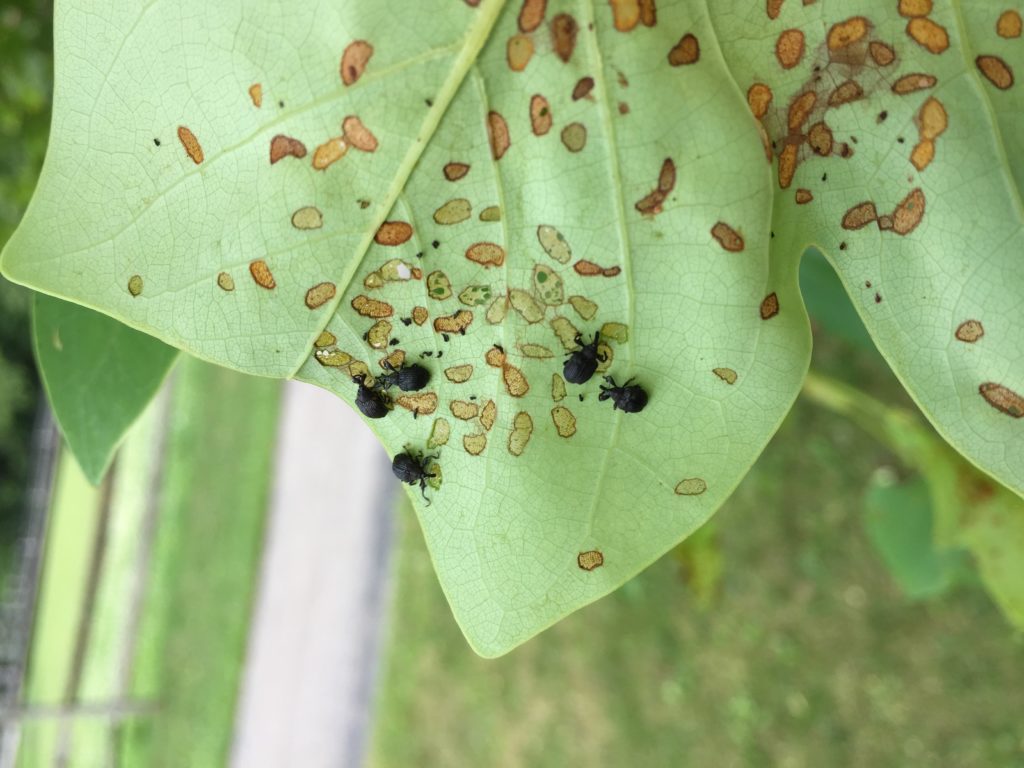Yellow Poplar Weevils on Poplar and Magnolia
go.ncsu.edu/readext?534682
en Español / em Português
El inglés es el idioma de control de esta página. En la medida en que haya algún conflicto entre la traducción al inglés y la traducción, el inglés prevalece.
Al hacer clic en el enlace de traducción se activa un servicio de traducción gratuito para convertir la página al español. Al igual que con cualquier traducción por Internet, la conversión no es sensible al contexto y puede que no traduzca el texto en su significado original. NC State Extension no garantiza la exactitud del texto traducido. Por favor, tenga en cuenta que algunas aplicaciones y/o servicios pueden no funcionar como se espera cuando se traducen.
Português
Inglês é o idioma de controle desta página. Na medida que haja algum conflito entre o texto original em Inglês e a tradução, o Inglês prevalece.
Ao clicar no link de tradução, um serviço gratuito de tradução será ativado para converter a página para o Português. Como em qualquer tradução pela internet, a conversão não é sensivel ao contexto e pode não ocorrer a tradução para o significado orginal. O serviço de Extensão da Carolina do Norte (NC State Extension) não garante a exatidão do texto traduzido. Por favor, observe que algumas funções ou serviços podem não funcionar como esperado após a tradução.
English
English is the controlling language of this page. To the extent there is any conflict between the English text and the translation, English controls.
Clicking on the translation link activates a free translation service to convert the page to Spanish. As with any Internet translation, the conversion is not context-sensitive and may not translate the text to its original meaning. NC State Extension does not guarantee the accuracy of the translated text. Please note that some applications and/or services may not function as expected when translated.
Collapse ▲We just got an alert from Amanda Taylor, Area Specialized Agent – Nursery and Greenhouse, that yellow poplar weevils, Odontopus calceatus, are active in WNC. I have started to seen them here in the Piedmont as well. Yellow poplar weevils can occasionally be severe pests of tulip poplars and magnolias growing in nurseries and landscapes. They are present throughout the state and throughout the east where ever their hosts grow wild. Adults are blue to black with a long snout.
The adults overwinter in leaf litter under host trees. On warm spring days they fly up and feed on buds and leaves. In May and early June eggs are laid in a row inside the midrib. After hatching, the grubs mine the leaves and cause blotch mines. Usually the blotch starts near the tip of the leaf. When ready to pupate, grubs move to an inflated portion of the mine and spin a spherical silk cocoon that soon turns brown. The inside of the mine is filled with strings of silk and frass. A new generation of adults emerges in mid June. By mid July the adults have disappeared to their hiding places in leaf litter and will remain inactive until spring.
Insecticides available for leaf-feeding beetles can be used if significant damage is expected or cannot be tolerated. There are a number of insecticides labeled for nursery and landscape use in the Southeastern US Pest Control Guide for Nursery Crops and Landscape Plantings.




